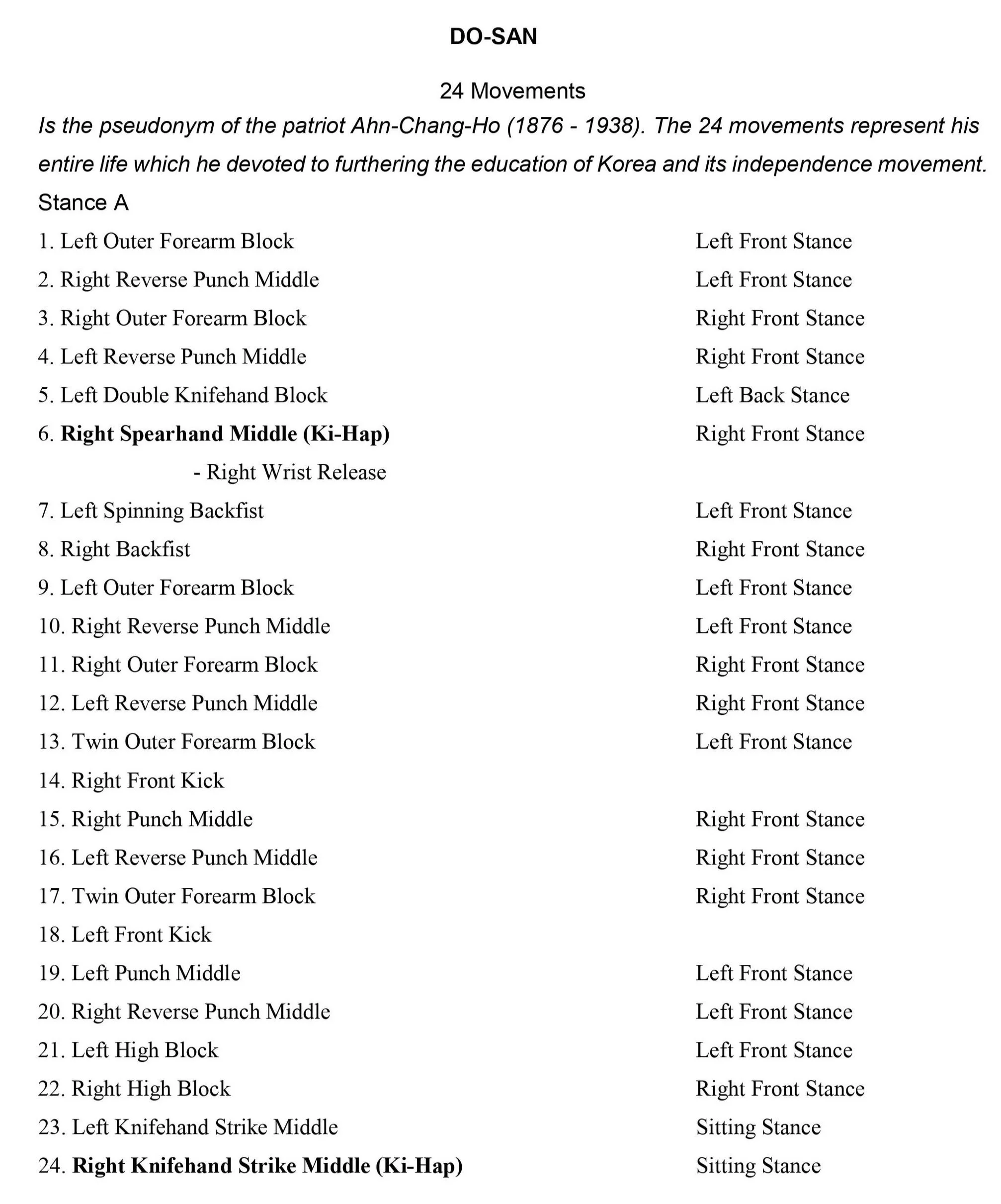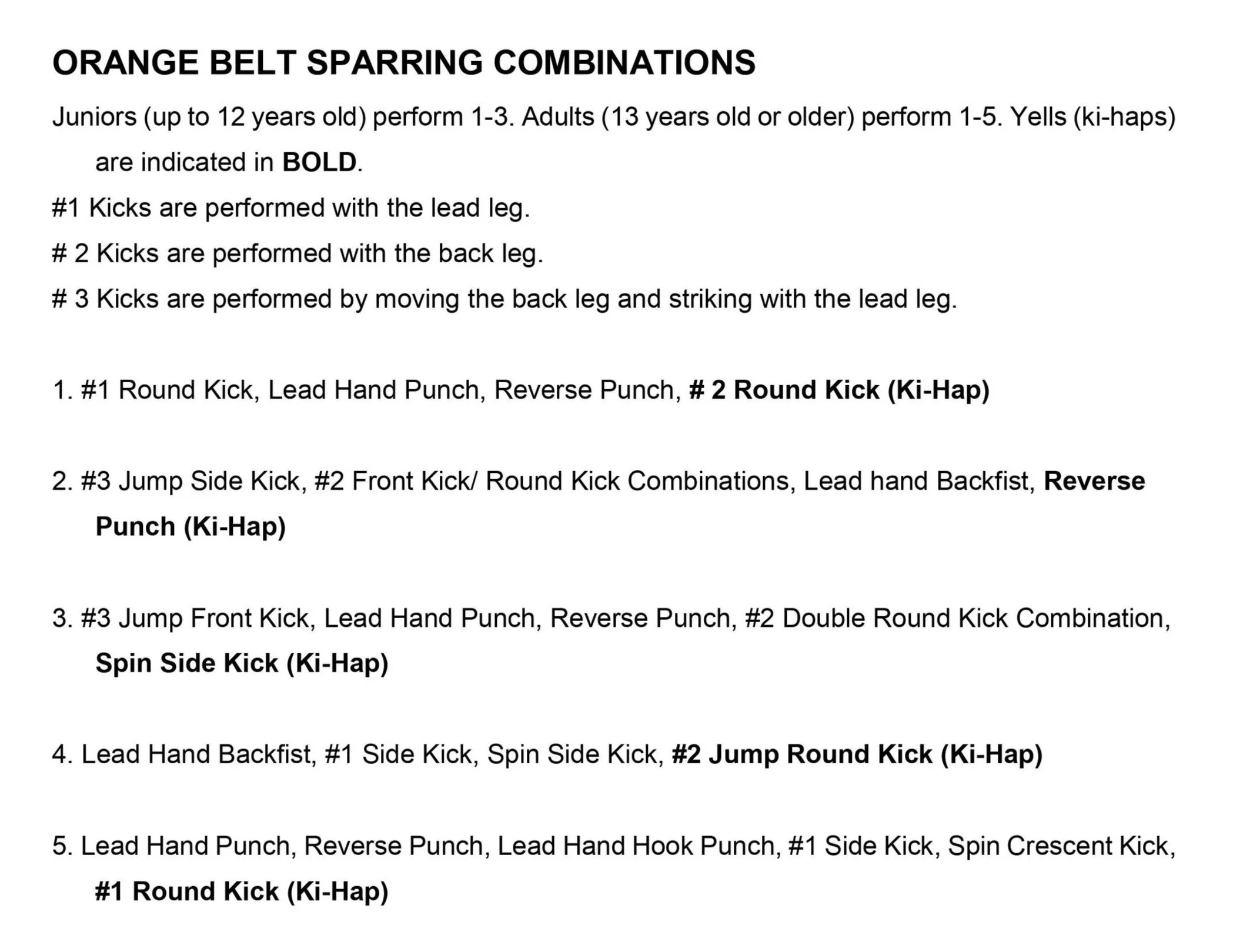Orange Belt
Form: Do-San Pattern
Patterns are an important aspect of training in Taekwondo. Patterns help develop proper technique and focus. Patterns also build muscle and improve both flexibility and accuracy. For each different colored belt, the pattern changes and becomes more complicated. The majority of the patterns (except Yul- Gok, Ul-Ji and Tong-Il) start with a defensive move, which emphasizes Taekwondoʼs defensive nature. All of the patterns start and end at the same location. This ensures that the practitioners' stances are the correct length, width, and in the proper direction. There are 24 patterns in the ITF style of Taekwondo; this is symbolic of the 24 hours in a day. The names of these patterns typically refer either to events in Korean history or to important people in Korean history. Elements of the patterns; such as the number of moves, the diagram, or the way the pattern ends may also be historical references.
One-Step Sparring
Taekwondo America uses Sparring Combinations to introduce the principles of free-sparring. It is a controlled method of sparring in which students practice fighting combinations with a moving partner while wearing gear and making light contact. Sparring Combinations encourage students to use a wide variety of fighting techniques. Students develop physical control of these techniques and learn the proper distance from a target that a technique should be executed. Orange belts are required to learn pre-arranged Sparring Combinations as part of their training. BASIC
RULES OF SPARRING COMBINATIONS
- Sparring Combinations should never be attempted without direct supervision of an Instructor and only red, Taekwondo America brand gear may be used. This includes hand gear, foot gear, head gear, shin guards, elbow pads, a mouthpiece and, for men, a groin protector.
- Before each match, the partners should bow and touch gloves. This is a show of respect and courtesy. It also indicates both partners are ready to begin.
- While fighting stances vary greatly, most follow the following principles: - Hands are up around the chin. This makes blocking techniques to the head much easier. - Body is turned sideways. This limits the surface area that is exposed to the opponent.
- Light on your feet. This makes it easier to move and evade incoming techniques.
- Eyes on your partner.
- Light contact is acceptable and encouraged. Impact, striking forcefully and which may result in injury, is not allowed and should be immediately addressed by the partners or instructors. If the level of control is exceeded, apologize sincerely and immediately.
- Legal target areas are the chest, above the belt, and the headgear. These areas may be struck with either the hands or feet.
- Striking with the knees or elbows is prohibited (though no sparring combination includes such a move).
Any any contact to the throat, face, back or below the belt is strictly prohibited. sweeps, takedowns, grabbing and grappling are also prohibited (though, again, no sparring combination includes such a move).
- Sparring combinations may be stopped at any time by either partner for any reason and is signaled by holding up both their hands.
- Never continue the combination if either partner is injured or can no longer defend themselves.
- At the end of each match, the partners should again bow and touch gloves


